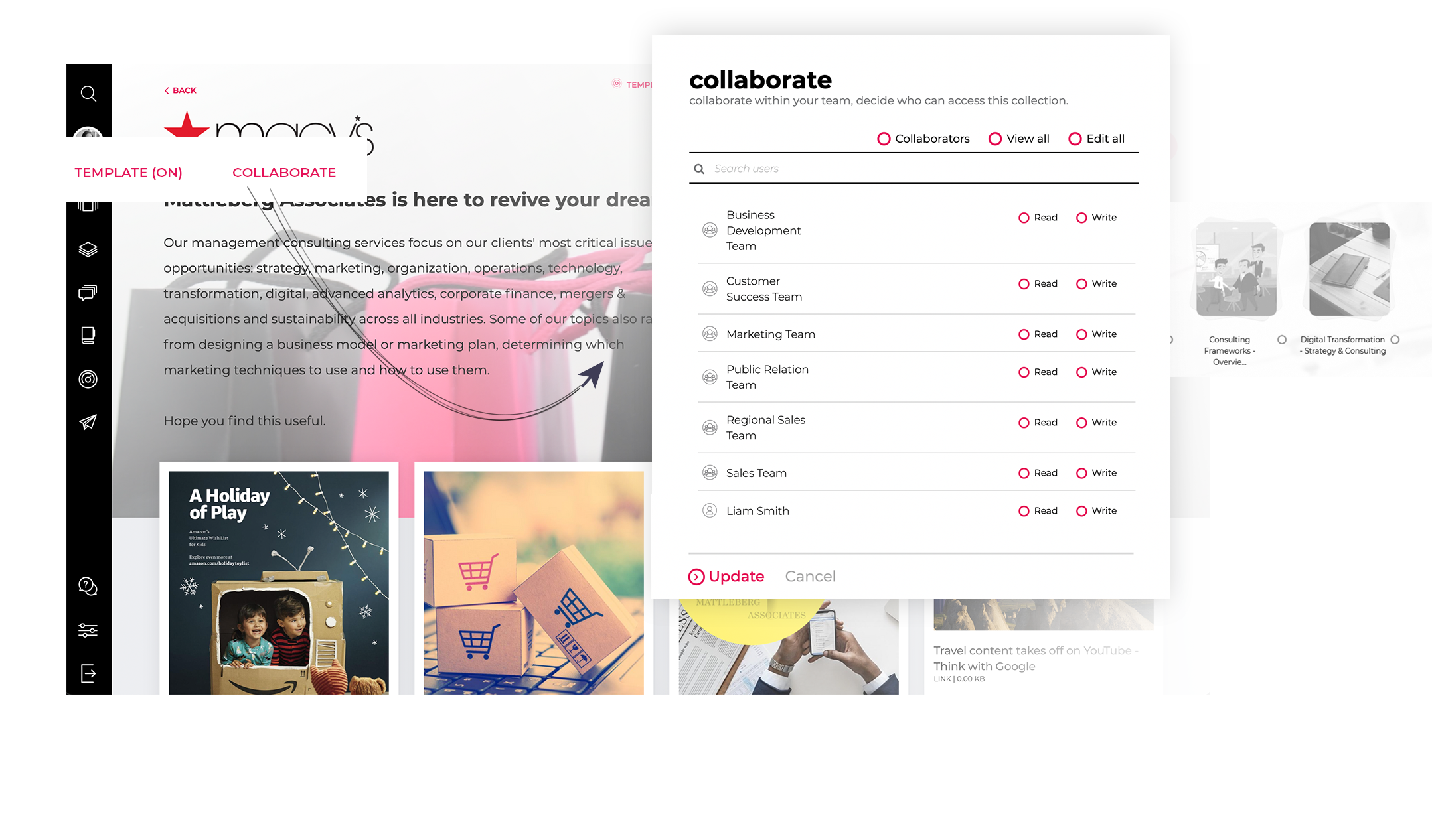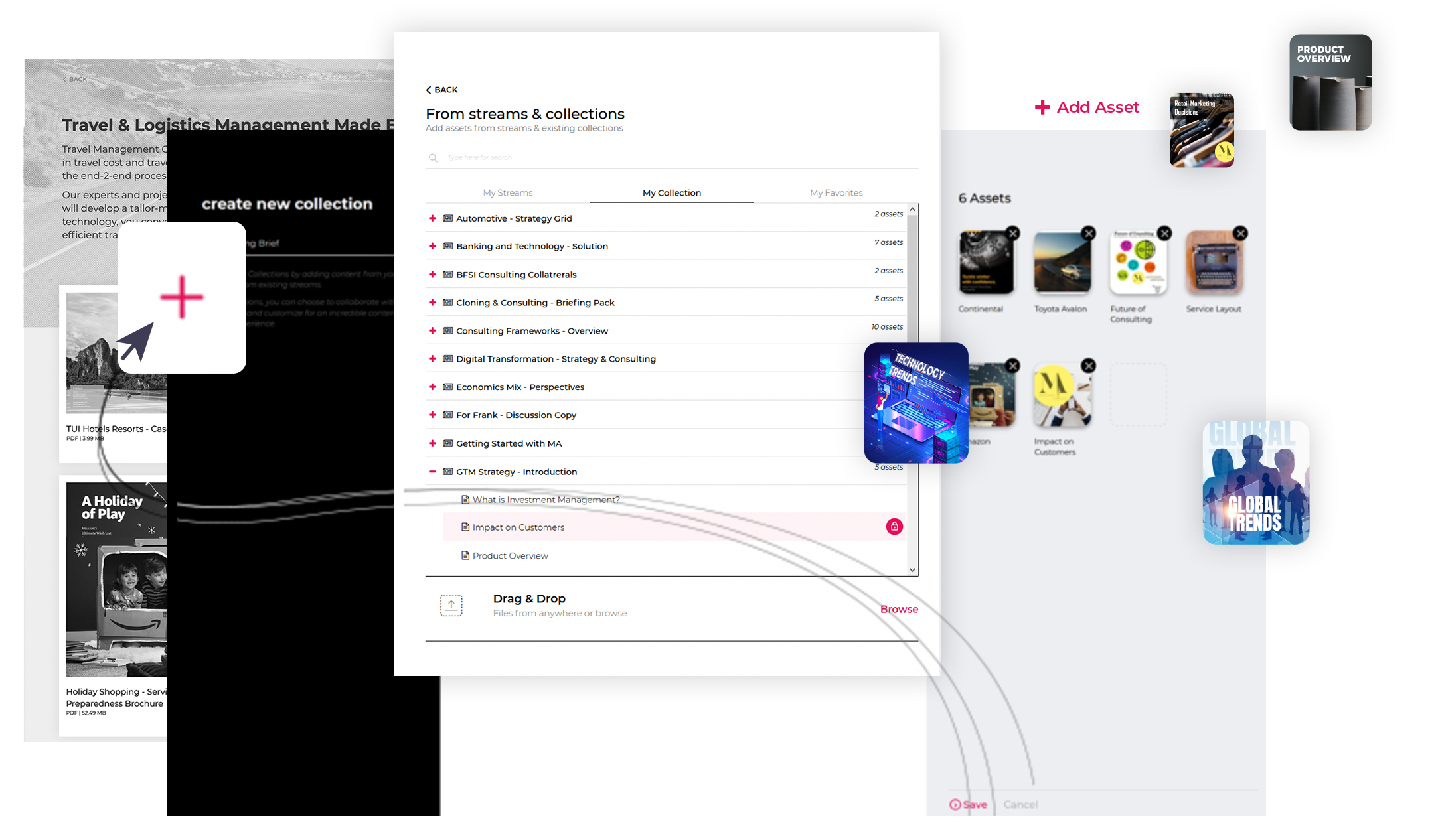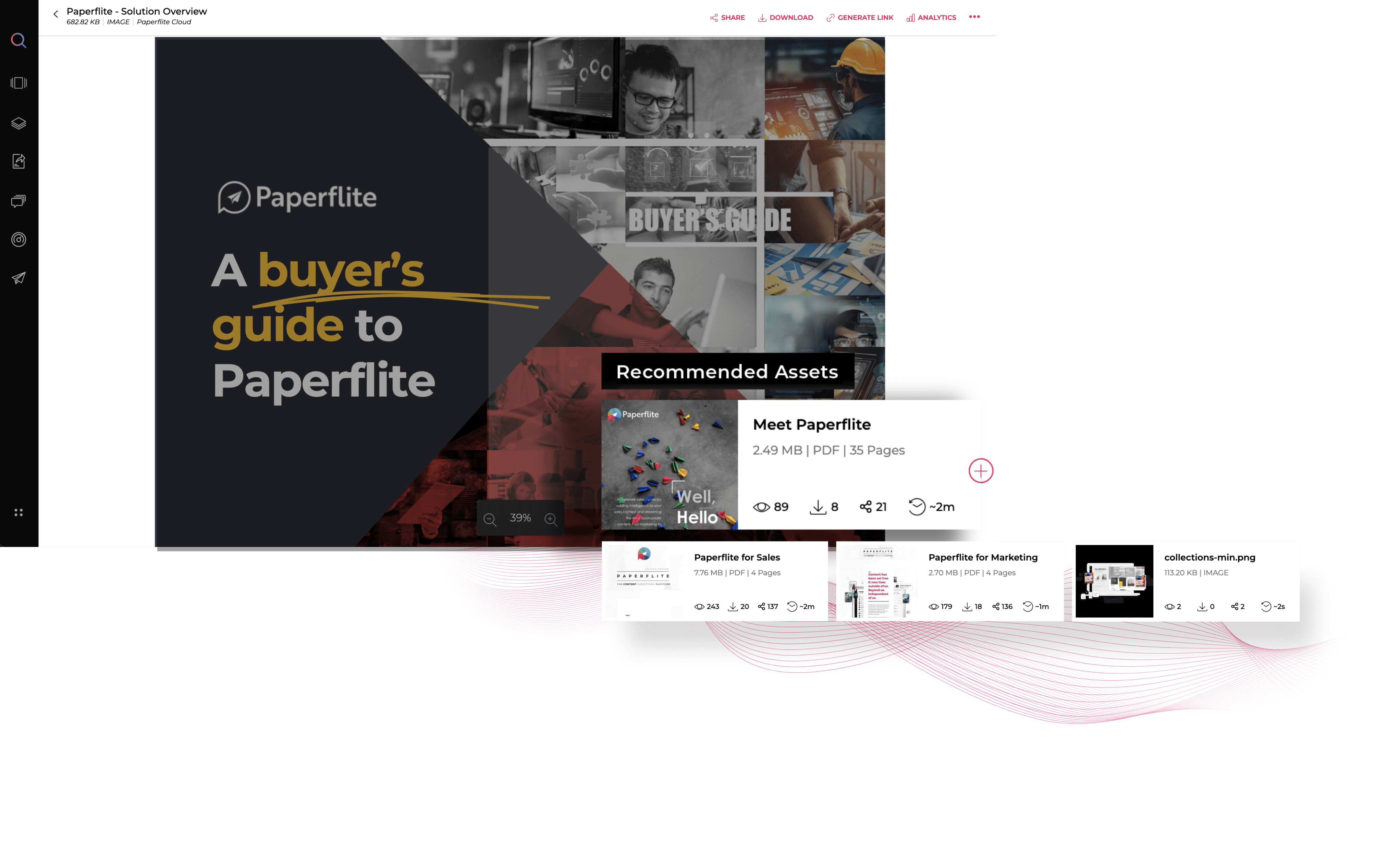Boost Your Business Through Revenue Enablement KPI
Explore what revenue enablement is, its benefits, how it differs from sales enablement, and the key pillars of a revenue enablement KPI framework.
In today's ever-changing business landscape, companies need to be agile and adaptable to stay ahead of the competition.
Revenue enablement has emerged as a crucial business function that supports companies through every stage of the customer journey, from lead generation to customer retention. Revenue enablement is a holistic process that improves the process and focuses on business outcomes.
This article will explore what revenue enablement is, its benefits, how it differs from sales enablement, and the key pillars of a revenue enablement KPI framework.
Additionally, it will discuss how to implement revenue enablement in your company and how paperflite can help you achieve your business goals.
What is revenue enablement?
Revenue enablement refers to the strategies, processes, and technologies used to align and equip sales, marketing, and customer success teams with the resources they need to drive revenue growth.
It involves optimizing the entire customer journey, from prospecting to retention, to maximize revenue potential. Ultimately, revenue enablement aims to create a unified and efficient revenue engine.
Benefits of revenue enablement
Revenue enablement offers a wide range of benefits, including improved cross-functional collaboration, increased revenue, and enhanced customer experiences. Here are some of the key benefits of revenue enablement:
Cross-functional collaboration:
Revenue enablement involves all teams that engage with the customer, including sales, marketing, and customer success. By aligning these teams around a shared strategy, companies can improve collaboration and achieve better results.

Covers every department:
Revenue enablement is a cross-functional process that covers every department in the organization, ensuring that everyone is working towards a common goal.
Supports through every stage of the customer journey:
Revenue enablement supports customers throughout their journey, from lead generation to customer retention. By ensuring that teams have the right tools and content at every stage, companies can improve the customer experience and drive revenue.

Improves the process:
Revenue enablement helps companies to identify areas of the sales process that need improvement, such as content gaps or process bottlenecks. By addressing these issues, companies can streamline the sales process and improve efficiency.
Focuses on business outcomes:
Revenue enablement focuses on the outcomes that matter most to the business, such as revenue growth and customer satisfaction. By aligning teams around these outcomes, companies can drive better results.
Revenue enablement focuses on the customer journey. The customer journey is a key factor in revenue enablement. Revenue enablement supports customers through every stage of their journey, from the first touchpoint to post-sale follow-up.
By aligning teams around the customer journey, companies can improve the customer experience and drive revenue.
Customer engagement is a critical component of revenue enablement. Making meaningful and personalized connections with customers, companies can build trust and establish long-term relationships.
Revenue enablement supports this process by providing teams with the right content and tools to engage with customers effectively.
It's worth noting that revenue enablement differs from sales enablement in its focus on the entire customer journey, rather than just the sales process.
While sales enablement focuses primarily on sales reps and their activities, revenue enablement encompasses all teams that engage with customers, including marketing and customer success.
How revenue enablement outperforms sales enablement?
Revenue enablement outperforms sales enablement in several ways. While sales enablement focuses solely on the sales process, revenue enablement takes a more holistic approach, supporting teams throughout the customer journey
Sales enablement is a process of providing sales teams with the necessary tools, content, and information to effectively engage with prospects and close deals. Revenue enablement, on the other hand, is a more holistic approach that aligns all revenue-generating teams to achieve business outcomes.
While sales enablement focuses on the sales process, revenue enablement takes a broader view of the entire customer journey and seeks to optimize the customer experience at every touchpoint.
In terms of key performance indicators (KPIs), sales enablement typically focuses on metrics such as deal size, win rates, and sales cycle length. Revenue enablement, on the other hand, takes a more customer-centric approach and focuses on KPIs such as customer lifetime value (CLV), customer acquisition cost (CAC), and customer retention rate.
Revenue enablement also looks beyond the sales function to incorporate other revenue-generating departments such as marketing and customer success.
Ultimately, the key difference between sales enablement and revenue enablement is that the former is a tactical process aimed at improving sales performance, while the latter is a strategic process aimed at improving business outcomes.
What are the key pillars of revenue enablement?
Revenue enablement is built on four key pillars: sales enablement, marketing enablement, customer success enablement, and partner enablement. Each of these pillars represents a different stage of the customer journey and requires a unique set of tools, content, and processes to optimize the customer experience.
Sales enablement focuses on equipping the sales team with the necessary tools, content, and information to engage with prospects and close deals. Marketing enablement focuses on creating and delivering marketing content and campaigns that support the sales process.
Customer success enablement focuses on ensuring that customers have a positive experience with the product or service and are able to achieve their desired outcomes. Partner enablement focuses on supporting partners such as resellers or distributors to effectively sell and market the product or service.
Tracking Revenue enablement KPI
To ensure the success of a revenue enablement program, tracking the right Key Performance Indicators (KPIs) is crucial. Here are some KPIs that can be used to track the effectiveness of a revenue enablement program:
Gross profit margin:
This metric indicates how much money a company makes after accounting for the costs of goods sold. It is a key indicator of a company's overall profitability.
Customer churn rate:
This metric measures the percentage of customers who stop doing business with a company over a given period of time. A high churn rate can be an indication of poor customer experience or low customer satisfaction.
Sales growth:
This metric measures the increase in revenue over a given period of time. It indicates the company's success in increasing revenue through new customer acquisition, upselling, and cross-selling.
Customer lifetime value:
This metric measures the total amount of revenue a customer is expected to generate over the course of their relationship with a company. It is an important metric for understanding the long-term value of a customer.
Cost to acquire customers:
This metric measures the amount of money a company spends on marketing and sales activities to acquire a new customer. A high cost to acquire customers can be an indication of inefficiencies in the marketing and sales processes.
Deal velocity:
This metric measures the amount of time it takes to close a deal. It is an important indicator of the effectiveness of a company's sales process.
Profitability:
This metric measures the overall profitability of a company's operations. It takes into account all costs and revenue streams to provide a comprehensive view of a company's financial performance.
Implementing revenue enablement KPI strategy
Designing and implementing a revenue enablement KPI strategy requires a structured approach. The following steps can be used to guide the process:
Set clear goals and objectives:
Define the specific outcomes that the revenue enablement program is intended to achieve. These should be aligned with overall business goals.
Identify relevant KPIs for each pillar:
Each of the four revenue enablement pillars requires a unique set of KPIs to measure success. Identify the relevant KPIs for each pillar and ensure that they are aligned with the overall goals and objectives of the program.
Establish baselines and targets:
Establish baseline metrics for each KPI and set realistic targets for improvement.
Implement the necessary technology and tools:
Choose the right technology and tools to support the program. This may include a digital asset management system, a customer relationship management system, or a learning management system.
Monitor and measure progress regularly:
Regularly monitor and measure progress against established KPIs to track the success of the program and identify areas for improvement.
Analyze results and adjust the strategy as needed:
Use the data collected to analyze results and adjust the strategy as needed to improve outcomes.
Best practices for successful implementation:
To ensure the success of a revenue enablement program, it is important to follow best practices, such as:
- Align the program with overall business goals
- Involve stakeholders from all revenue-generating departments
- Choose the right technology and tools
- Regularly monitor and measure progress
- Continuously iterate and improve the program
Revenue enablement KPI framework
The revenue enablement KPI framework is designed to measure the effectiveness of a revenue enablement program across the four key pillars: sales, marketing, enablement, and customer. Here are the key KPIs for each pillar:
Sales KPI:
- Sales cycle length: This metric measures the amount of time it takes for a sales opportunity to move from initial contact to closed deal.
- Sales conversion rate: This metric measures the percentage of sales opportunities that result in a closed deal.
- Customer lifetime value (CLV): This metric measures the total amount of revenue a customer is expected to generate over the course of their relationship with a company.
- Customer acquisition cost (CAC): This metric measures the amount of money a company spends on marketing and sales activities to acquire a new customer.
- Sales quota attainment: This metric measures the percentage of a sales team's quota that is achieved within a given period of time.
Marketing KPI:
- Lead generation rate: This metric measures the number of new leads generated by a company over a given period of time.
- Marketing qualified leads (MQLs): This metric measures the number of leads that meet specific criteria that indicate they are likely to become customers.
- Sales qualified leads (SQLs): This metric measures the number of MQLs that have been qualified by the sales team as having a high likelihood of becoming customers.
- Cost per lead (CPL): This metric measures the amount of money a company spends on marketing activities to generate a single lead.
Enablement KPI:
- Training effectiveness: This metric measures the effectiveness of sales training programs in improving the performance of the sales team.
- Content utilization rate: This metric measures the percentage of sales content that is being used by the sales team.
- Time to productivity: This metric measures the amount of time it takes for new sales reps to become fully productive.
Customer KPI:
- Are essential to track the success of revenue enablement.
- Net Promoter Score (NPS) measures how likely customers are to recommend your product or service to others.
- Customer Satisfaction (CSAT) measures how satisfied customers are with your product or service.
- Customer Retention Rate measures how many customers continue to use your product or service over time.
- Upsell and Cross-sell Revenue measures how much revenue comes from existing customers purchasing additional products or services.
Real-world examples of these KPIs in action include tracking NPS to identify areas for improvement in customer service or product offerings, measuring CSAT to determine how well your product or service meets customer needs, analyzing customer retention rate to identify trends in customer behavior, and tracking upsell and cross-sell revenue to optimize sales strategies.
Implement revenue enablement in your company:
It is important to choose the right software. Look for features such as content management, analytics, and training tools. Paperflite is a software solution that can help with specific revenue enablement features, such as personalized content recommendations, and real-time analytics.

To ensure successful implementation, set clear goals and objectives, identify relevant KPIs for each pillar of the revenue enablement framework, establish baselines and targets, implement necessary technology and tools, monitor and measure progress regularly, analyze results and adjust the strategy as needed.
Conclusion:
Revenue enablement is a holistic process that goes beyond traditional sales enablement to align all teams and drive revenue growth. By tracking key KPIs and implementing the right software and strategy,
Paperflite's content management and sales enablement platform, businesses can create and distribute engaging content, track engagement, and provide sales teams with the insights they need to close more deals. Whether you're looking to improve your sales process, boost customer engagement, or increase revenue,
Paperflite is an excellent solution to consider for companies to successfully implement revenue enablement and achieve their goals.
